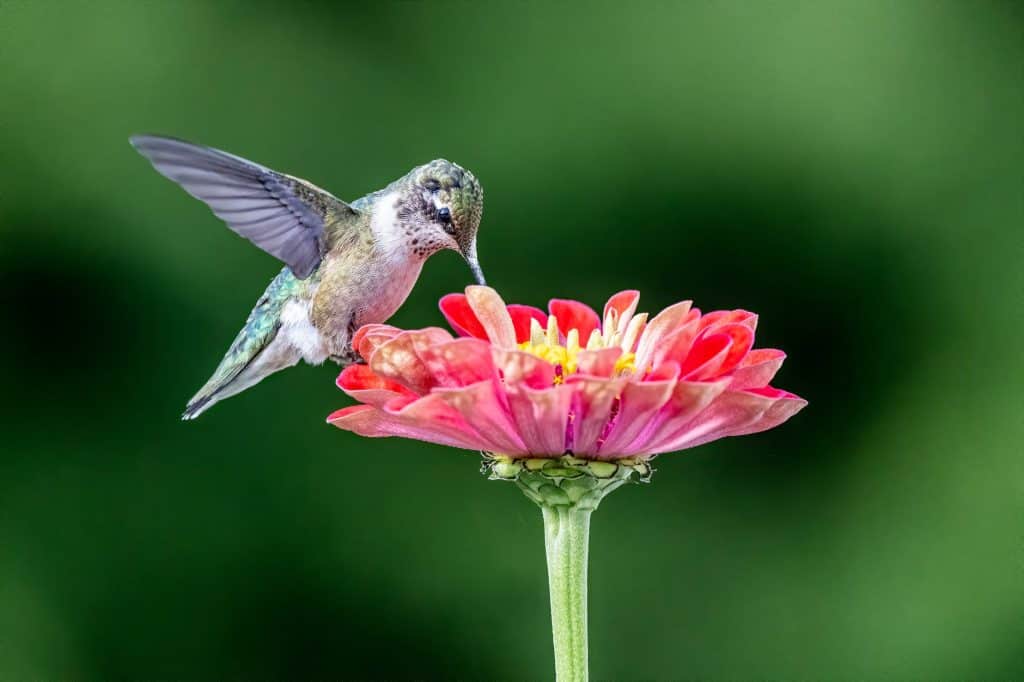Hummingbirds in North America and the flowers they adore! A Fascinating Relationship with Nectar-Rich Plants
Hummingbirds are among the most captivating and enchanting birds found in North America. Known for their vibrant plumage and remarkable flight abilities, these tiny avian wonders are an integral part of the ecosystem. In this article, we will explore the intriguing world of hummingbirds in North America and delve into the plants that attract and sustain these captivating creatures.



1. Hummingbird Species in North America:
North America is home to several species of hummingbirds, including the Ruby-throated Hummingbird, Anna’s Hummingbird, Rufous Hummingbird, and Broad-tailed Hummingbird, among others. Each species possesses unique characteristics, such as distinct color patterns and preferences for specific habitats.
2. Habitat and Migration Patterns:
Hummingbirds occupy diverse habitats throughout North America, ranging from forests and meadows to coastal regions and deserts. These birds undertake remarkable migratory journeys, often traveling thousands of miles between their breeding and wintering grounds. Understanding their migratory patterns is crucial for providing suitable habitats and food sources.
3. Nectar-Rich Plants:
Hummingbirds have a high metabolic rate and rely heavily on nectar as their primary energy source. To attract hummingbirds to your garden or outdoor space, it is essential to cultivate nectar-rich plants. Some popular choices include:
a. Trumpet Vine (Campsis radicans): Known for its fiery red flowers, the trumpet vine provides abundant nectar and is a favorite among hummingbirds.

b. Bee Balm (Monarda): This showy perennial produces vibrant blossoms in shades of red, pink, and purple, attracting hummingbirds with its nectar-filled flowers.

c. Cardinal Flower (Lobelia cardinalis): With its striking scarlet blooms, the cardinal flower entices hummingbirds while adding a splash of color to any garden.

d. Salvia (Salvia spp.): Salvias come in various colors and sizes, making them a versatile choice for attracting hummingbirds. Their tubular-shaped flowers contain copious amounts of nectar.

e. Penstemon (Penstemon spp.): These wildflowers produce tubular blossoms that hummingbirds find irresistible. The diversity of penstemon species allows for a range of colors and growth habits.

f. Phlox paniculata (Summer Phlox): Panicles of sweetly scented blooms on a strong stem and rich green leaves, shades of White through Salmon these hardy perennials make a great pollinator magnet too.

4. Planting Strategies and Maintenance:
To create an enticing hummingbird habitat, consider the following tips:
a. Plant a variety of nectar-rich flowers that bloom at different times throughout the year, ensuring a continuous food source.
b. Choose native plant species whenever possible, as they are well-adapted to local climates and provide a reliable food source for hummingbirds.
c. Incorporate plants of different heights and structures to offer perching spots and shelter for hummingbirds.
d. Provide a water source, such as a birdbath or a shallow dish with fresh water, as hummingbirds require frequent hydration.
e. Avoid using pesticides and herbicides, as these chemicals can be harmful to hummingbirds and other beneficial pollinators.

Conclusion:
Hummingbirds bring joy and beauty to North America’s landscapes with their iridescent feathers and remarkable aerial displays. By cultivating nectar-rich plants and creating suitable habitats, we can encourage these captivating birds to visit our gardens and provide them with the sustenance they need. Embrace the marvels of nature and unlock the secrets of the hummingbird-plant relationship, enhancing both your surroundings and the lives of these magnificent creatures.


